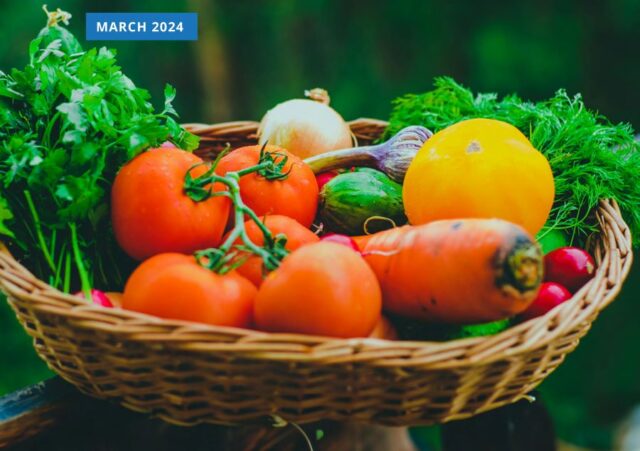…During the COVID-19 pandemic, food insecure Nigerians rose from 28 million to 36.5 million by June 2020. This was driven by the shock of the national food system, which was occasioned by the national lockdown.
…The good news is that no part of Nigeria is considered High Risk or Moderate Risk and Deteriorating; in other words, we are not at risk climatically from famine or drought.
TUE AUG 06 2024-theGBJournal| The number of food-insecure Nigerians increased significantly, from 66.2 million in Q1, 2023, to 100 million in Q1, 2024 (WFP, 2024), with 18.6 million facing acute hunger and 43.7 million, says the Nigerian Economic Summit Group (NESG), in a comprehensive policy brief that delves deep into the causes and consequences of this crisis.
The report, released ahead of the 30th Nigerian Economic Summit, (Status of Food Security: Dimensioning the Crisis, Policy Options and Strategic Responses) describes food security issue in Nigeria as part of a broader national poly-crisis that highlights the country’s social and macroeconomic instability.
It warns that Nigeria is currently facing an unprecedented food crisis, with food inflation reaching alarming levels and a sharp rise in the number of food-insecure citizens.
”The situation has escalated to a critical point, demanding immediate attention and action. This unprecedented crisis demands immediate humanitarian, social protection, and food systems responses,” NESG said.
NESG reckons that at the heart of this crisis lies a complex trilemma: affordability, accessibility, and availability of food.
”These challenges impact not only domestic consumption—including individual households, commercial businesses, and industries—but also the nation’s ability to export food products,” NESG says in the report.
The NESG’s analysis underscores the urgent need for a multifaceted approach to addressing this humanitarian crisis.
It offers actionable recommendations to tackle the immediate humanitarian needs, enhance social protection measures, and reform food systems across the country.
In January 2024, Nigeria’s food inflation surged to 35.41% from 33.9% in December 2023. Nigerians are showing crisis-level or above crisis-level hunger coping strategies as of March 2024.
Regarding availability, the Nigerian Agriculture Sector contracted in 2023, reflecting lower productivity.
”The good news is that no part of Nigeria is considered High Risk or Moderate Risk and Deteriorating; in other words, we are not at risk climatically from famine or drought. However, this has typically not been the challenge for Nigeria.”
During the COVID-19 pandemic, food insecure Nigerians rose from 28 million to 36.5 million by June 2020. This was driven by the shock of the national food system, which was occasioned by the national lockdown.
Five years before that, food demand had historically exceeded supply.
Between September 2020 and September 2022, the hunger headcount increased from 39.9 million to 55.8 million food-insecure Nigerians, with 36.8% of children under five years showing chronic malnutrition and 6.8% of children under five years showing acute malnutrition (World Food Programme, 2022).
The NESG report notes Nigerian National Food System has had a systemic deficit for decades and is vulnerable to external and internal shocks.
It showed the food deficit chart reflecting the Food Demand and Supply Deficits in 2016, which indicated the historical gap in Agricultural Productivity to meet domestic demand.
However, post-COVID, the Russian-Ukraine war in 2021 triggered imported inflation.
The war increased food prices by 23%, the highest in the previous two decades and deeply affected the availability of critical inputs like fertiliser.
The comprehensive impact of the war on Nigerian Agriculture could be seen in grains and fertiliser.

In global fertiliser supply chains, the disruption in the supply of Urea and Potash drove the prices of urea and potash to rise by 22% and 34%, respectively, between February and March 2022. This led to a reduction in agricultural output in 2022.
Similarly, the disruption to global Wheat trade drove Prices by 4.35% between January and February 2022 and drove maize prices by 10.62% between Dec. 2021 and Feb. 2022, with a corresponding rise in food prices and animal feeds.
As a result, in Nigeria, between 2016 and 2022, the Maize national demand of 7.5MT rose to 15MT, with supply deficit rising from 0.5MT to 2.8MT (19% supply gap); the Wheat national demand of 4.7MT rose to 6MT, while supply deficit rose from 4.6MT to 5.937MT (approx. 99% supply gap).
The NESG report says this indicates a chronic food system deficit vulnerable to shocks like the COVID-19 pandemic, natural disasters, and macroeconomic instability.
”It is crucial to note that even with Central Bank of Nigeria (CBN) interventions in 2021, the supply gaps persisted into 2022.”
Meanwhile, the 30th Nigerian Economic Summit will hold from October 14th to 16th, 2024, at the Transcorp Hilton in Abuja, under the theme ”Collaborative Action for Growth, Competitiveness, and Stability.”
X-@theGBJournal|Facebook-the Government and Business Journal|email:gbj@govbusinessjournal.com|govandbusinessj@gmail.com










